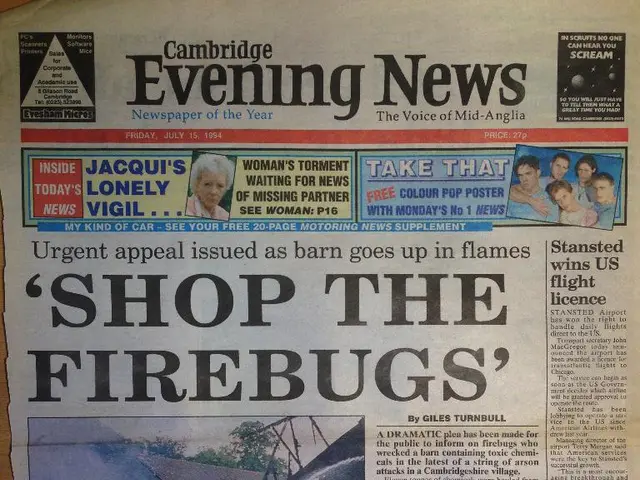Suffolk Wildlife Trust Reacts to Sizewell C Launching a New Environmental Non-profit Organization
In East Suffolk, the Sizewell C development is set to take place in an area that encompasses SSSIs (Sites of Special Scientific Interest) and irreplaceable wetland habitats, which play a crucial role in the regional and national biodiversity. Recognising the potential impact on wildlife, Sizewell C is legally obligated to deliver mitigation and compensation measures.
One of the key initiatives in this regard is the East Suffolk Trust (EaST), a grant-giving charity established in collaboration with Sizewell C and two local councils. EaST is dedicated to enhancing biodiversity and restoring landscapes in the area, and will contribute to the implementation of mitigation and compensation by funding projects that promote habitat restoration and biodiversity benefits linked to Sizewell C’s impact.
Ben McFarland, Director of Wildlife Conservation & Recovery, underscores the need for the projects resulting from the EaST funds to be as good as they can be for wildlife. He emphasises that opportunities may be explored that align with Suffolk Wildlife Trust's goals to protect and restore wildlife during Sizewell C development.
The development is likely to have a significant impact on sensitive species such as the natterjack toad, adder, and various bat species, due to potential disruption or destruction of their habitats. To address this, Sizewell C's mitigation and compensation measures include the creation of replacement habitats and specific habitat enhancements.
For instance, replacement habitats will be created outside of the Development Consent Order (DCO) Order Land to compensate for losses caused by the Sizewell C development for the natterjack toads. While not explicitly detailed for adders in the Project Specification, broader habitat enhancements—including wetland creation and woodland enhancements—support local biodiversity, indirectly benefiting such species.
Regarding bats, traditional bat mitigation methods such as bat tunnels are acknowledged, but recent legislative changes exempt new nuclear power station developments like Sizewell C from obligations under the Conservation of Habitats and Species Regulations 2017, limiting enforcement of mitigation measures for bats and others. This has raised concerns among wildlife conservation charities about the potential impacts on species like barbastelle bats in the region, indicating ongoing tension around protection.
Since the approval of Sizewell C, Suffolk Wildlife Trust has refocused efforts on engaging with Sizewell C to ensure the best possible results for nature. McFarland expresses uncertainty about whether the EaST funds will be enough to fully mitigate the impact of Sizewell C, but emphasises the need for local wildlife groups and charities to strive for the best possible results for wildlife.
In summary, the Sizewell C development presents a complex balance between development and sensitive wildlife conservation. The mitigation includes creating replacement habitats (notably for natterjack toads) and broader habitat improvements, while EaST plays a direct role in funding and overseeing biodiversity enhancement measures in East Suffolk related to Sizewell C. However, recent regulatory changes may reduce enforceable protections for certain species like bats at new nuclear sites, making it crucial for all parties involved to work collaboratively towards effective wildlife conservation.
[1] Sizewell C Environmental Statement [2] Regulatory Changes for New Nuclear Power Stations [3] Barbastelle Bat Conservation [4] Suffolk Wildlife Trust's Position on Sizewell C [5] East Suffolk Trust (EaST)
- The Sizewell C Environmental Statement highlights the importance of mitigation and compensation measures to protect regional biodiversity, especially in light of the development's impact on SSSIs and wetland habitats.
- One of the key initiatives for wildlife conservation in East Suffolk is the East Suffolk Trust (EaST), a charity established in collaboration with Sizewell C and local councils, dedicated to enhancing biodiversity and restoring landscapes.
- Ben McFarland, Director of Wildlife Conservation & Recovery, stresses the importance of making the most of the projects funded by EaST for wildlife conservation, including aligning them with Suffolk Wildlife Trust's goals to protect and restore wildlife during Sizewell C development.
- Although Sizewell C's mitigation and compensation measures include creating replacement habitats and specific habitat enhancements, ongoing concerns exist regarding potential impacts on sensitive species like barbastelle bats, due to recent regulatory changes that limit enforceable protections at new nuclear sites.




